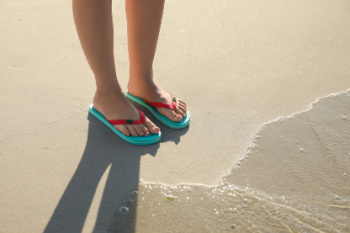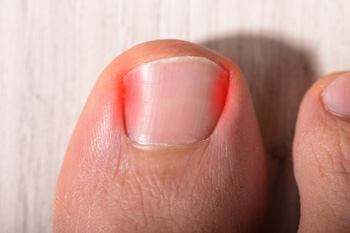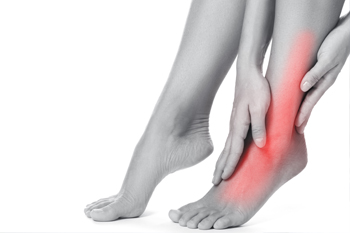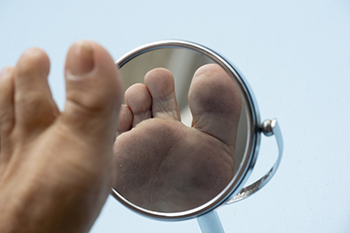Connect With Us
Blog
Items filtered by date: July 2025
The Hidden Risks of Wearing Flip-Flops

Flip-flops are a popular choice for casual wear, but they can cause serious foot problems over time. Most flip-flops offer little to no arch or heel support, which can lead to strain on the feet and ankles. Wearing them for extended periods of time may contribute to plantar fasciitis, heel pain, tendonitis, and flat feet. The lack of stability can also increase the risk of trips and falls. A podiatrist can assess foot health, recommend supportive footwear, and treat pain or injury caused by improper shoe choices. If you are experiencing foot discomfort from wearing flip-flops, it is suggested that you visit a podiatrist who can treat various foot conditions and guide you on appropriate flip-flop choices.
Flip-flops are not always the best choice of footwear. If you have any concerns about your feet or ankles, contact one of our podiatrists from Crystal Lake Foot & Ankle Center. Our doctors will assist you with all of your foot and ankle needs.
Flip-Flops and Feet
When the weather starts warming up, people enjoy wearing flip-flops. Flip-flops are comfortable, stylish, and easy to slip on and off; they're perfect for any summer beach goer. However, these shoes can cause harm to the feet.
How Can Flip-Flops Affect Me Long-Term?
- Ankle problems
- Hip problems
- Lower back problems
- Pain in the balls of the feet
- Problems with foot arches
- Changes in the way you walk
Are There Injuries Associated with Flip-Flops?
Yes. Since flip-flops are relatively weak and do not provide the same amount of support as sneakers, people who wear flip-flops regularly are more susceptible to injuries. On top of that, the open nature of the shoe makes your feet more prone to other problems, such as cuts and even infections. Common injuries and ailments include:
- Sprained ankles
- Blisters
- Infections
- Cuts and Scrapes
I like Wearing Flip-Flops. Are There Safe Alternatives?
When buying flip-flops, try to find ones that have sturdy soles and that are made of high-quality materials that will support for your feet. These flip-flops will cost more but will also last longer as a result.
If you have any questions, please feel free to contact our office located in Crystal Lake, IL . We offer the newest diagnostic and treatment technologies for all your foot care needs.
Ingrown Toenails and the Importance of Podiatric Care

An ingrown toenail occurs when the edge of the toenail grows into the surrounding skin, leading to discomfort and possible infection. This condition often affects the big toe and may result from improper nail trimming, wearing tight footwear, injury, or genetic nail shape. Symptoms include redness, swelling, pain, and sometimes drainage or infection. Risk factors include poor foot hygiene, repetitive pressure on the toes, and certain foot shapes. A podiatrist can treat ingrown toenails by relieving pain, possibly removing the affected portion of the nail, and preventing future occurrences. If left untreated, complications may develop. If you notice signs of an ingrown toenail, it is suggested that you consult a podiatrist who can provide you with relief options.
Ingrown toenails can become painful if they are not treated properly. For more information about ingrown toenails, contact one of our podiatrists of Crystal Lake Foot & Ankle Center. Our doctors can provide the care you need to keep you pain-free and on your feet.
Ingrown Toenails
Ingrown toenails occur when a toenail grows sideways into the bed of the nail, causing pain, swelling, and possibly infection.
Causes
- Bacterial infections
- Improper nail cutting such as cutting it too short or not straight across
- Trauma to the toe, such as stubbing, which causes the nail to grow back irregularly
- Ill-fitting shoes that bunch the toes too close together
- Genetic predisposition
Prevention
Because ingrown toenails are not something found outside of shoe-wearing cultures, going barefoot as often as possible will decrease the likeliness of developing ingrown toenails. Wearing proper fitting shoes and using proper cutting techniques will also help decrease your risk of developing ingrown toenails.
Treatment
Ingrown toenails are a very treatable foot condition. In minor cases, soaking the affected area in salt or antibacterial soaps will not only help with the ingrown nail itself, but also help prevent any infections from occurring. In more severe cases, surgery is an option. In either case, speaking to your podiatrist about this condition will help you get a better understanding of specific treatment options that are right for you.
If you have any questions, please feel free to contact our office located in Crystal Lake, IL . We offer the newest diagnostic and treatment technologies for all your foot care needs.
Causes of Lateral Foot Pain

Pain on the outer edge of the foot, known as lateral foot pain, can result from a variety of issues affecting the bones, joints, ligaments, or tendons. Common causes of lateral foot pain include stress fractures from repetitive impact, such as running or jumping, and cuboid syndrome, which involves injury to a bone along the outer midfoot. Peroneal tendonitis may also lead to lateral pain due to overuse or an ankle injury. Twisting the foot inward can stretch or tear ligaments, resulting in a sprain that causes sharp pain and bruising on the outside of the ankle. In some cases, inherited conditions like tarsal coalition, where bones near the back of the foot grow together abnormally, may lead to chronic stiffness and discomfort. Arthritis may also affect the outer foot joints, especially with age or previous injury. A podiatrist can examine the foot, order imaging tests if needed, and offer treatment. If you have pain on the outer side of your foot, it is suggested that you make an appointment with a podiatrist for an exam, diagnosis, and treatment.
Foot Pain
Foot pain can be extremely painful and debilitating. If you have a foot pain, consult with one of our podiatrists from Crystal Lake Foot & Ankle Center. Our doctors will assess your condition and provide you with quality foot and ankle treatment.
Causes
Foot pain is a very broad condition that could be caused by one or more ailments. The most common include:
- Bunions
- Hammertoes
- Plantar Fasciitis
- Bone Spurs
- Corns
- Tarsal Tunnel Syndrome
- Ingrown Toenails
- Arthritis (such as Gout, Rheumatoid, and Osteoarthritis)
- Flat Feet
- Injury (from stress fractures, broken toe, foot, ankle, Achilles tendon ruptures, and sprains)
- And more
Diagnosis
To figure out the cause of foot pain, podiatrists utilize several different methods. This can range from simple visual inspections and sensation tests to X-rays and MRI scans. Prior medical history, family medical history, and any recent physical traumatic events will all be taken into consideration for a proper diagnosis.
Treatment
Treatment depends upon the cause of the foot pain. Whether it is resting, staying off the foot, or having surgery; podiatrists have a number of treatment options available for foot pain.
If you have any questions, please feel free to contact our office located in Crystal Lake, IL . We offer the newest diagnostic and treatment technologies for all your foot care needs.
How to Care for Plantar Warts

Plantar warts appear on the soles of the feet and are caused by a viral infection in the outer skin layer. They often develop in areas of pressure, such as the heel or ball of the foot, and may feel like stepping on a small stone. These warts can spread through skin contact or from walking barefoot on damp surfaces like gym floors or locker rooms. While some may go away on their own, others can grow, multiply, or cause discomfort with walking. Avoid picking at the area to prevent spreading the virus, and keep the foot clean and dry. For persistent or painful warts, or, if walking becomes difficult, seeing a podiatrist can help avoid further issues. If a plantar wart is not improving with home care, it is suggested that you consult a podiatrist for a proper evaluation and appropriate care.
Plantar warts can be very uncomfortable. If you need your feet checked, contact one of our podiatrists from Crystal Lake Foot & Ankle Center. Our doctors will assist you with all of your foot and ankle needs.
About Plantar Warts
Plantar warts are the result of HPV, or human papillomavirus, getting into open wounds on the feet. They are mostly found on the heels or balls of the feet.
While plantar warts are generally harmless, those experiencing excessive pain or those suffering from diabetes or a compromised immune system require immediate medical care. Plantar warts are easily diagnosed, usually through scraping off a bit of rough skin or by getting a biopsy.
Symptoms
- Lesions on the bottom of your feet, usually rough and grainy
- Hard or thick callused spots
- Wart seeds, which are small clotted blood vessels that look like little black spots
- Pain, discomfort, or tenderness of your feet when walking or standing
Treatment
- Freezing
- Electric tool removal
- Laser Treatment
- Topical Creams (prescription only)
- Over-the-counter medications
To help prevent developing plantar warts, avoid walking barefoot over abrasive surfaces that can cause cuts or wounds for HPV to get into. Avoiding direct contact with other warts, as well as not picking or rubbing existing warts, can help prevent the further spread of plantar warts. However, if you think you have developed plantar warts, speak to your podiatrist. He or she can diagnose the warts on your feet and recommend the appropriate treatment options.
If you have any questions, please feel free to contact our office located in Crystal Lake, IL . We offer the newest diagnostic and treatment technologies for all your foot care needs.
Are You Suffering From Ingrown Toenails?
Exploring Negative Pressure Wound Care

Negative pressure wound therapy applies controlled suction to non‑healing wounds on the foot, toes, or ankle to reduce excess fluid, improve blood flow, and stimulate healthy tissue formation. A podiatrist evaluates the wound’s depth, tissue condition, and surrounding skin before implementing therapy. The procedure involves using a porous dressing connected to a device that gently draws out excess fluids and encourages the wound edges to contract. This type of wound care also supports new tissue growth and promotes circulation. By removing excess fluid and proteins, the therapy helps restore proper pressure balance in the wound bed. It is most suitable for ulcers, non‑healing surgical sites, or complicated ankle wounds that have stalled in healing. Negative pressure therapy supports wound closure while it also minimizes infection risk and avoids unnecessary surgery. If you have foot wounds that will not heal, it is suggested that you schedule an appointment with a podiatrist for appropriate treatment.
Wound care is an important part in dealing with diabetes. If you have diabetes and a foot wound or would like more information about wound care for diabetics, consult with one of our podiatrists from Crystal Lake Foot & Ankle Center. Our doctors will assess your condition and provide you with quality foot and ankle treatment.
What Is Wound Care?
Wound care is the practice of taking proper care of a wound. This can range from the smallest to the largest of wounds. While everyone can benefit from proper wound care, it is much more important for diabetics. Diabetics often suffer from poor blood circulation which causes wounds to heal much slower than they would in a non-diabetic.
What Is the Importance of Wound Care?
While it may not seem apparent with small ulcers on the foot, for diabetics, any size ulcer can become infected. Diabetics often also suffer from neuropathy, or nerve loss. This means they might not even feel when they have an ulcer on their foot. If the wound becomes severely infected, amputation may be necessary. Therefore, it is of the upmost importance to properly care for any and all foot wounds.
How to Care for Wounds
The best way to care for foot wounds is to prevent them. For diabetics, this means daily inspections of the feet for any signs of abnormalities or ulcers. It is also recommended to see a podiatrist several times a year for a foot inspection. If you do have an ulcer, run the wound under water to clear dirt from the wound; then apply antibiotic ointment to the wound and cover with a bandage. Bandages should be changed daily and keeping pressure off the wound is smart. It is advised to see a podiatrist, who can keep an eye on it.
If you have any questions please contact our office located in Crystal Lake, IL . We offer the newest diagnostic and treatment technologies for all your foot and ankle needs.

